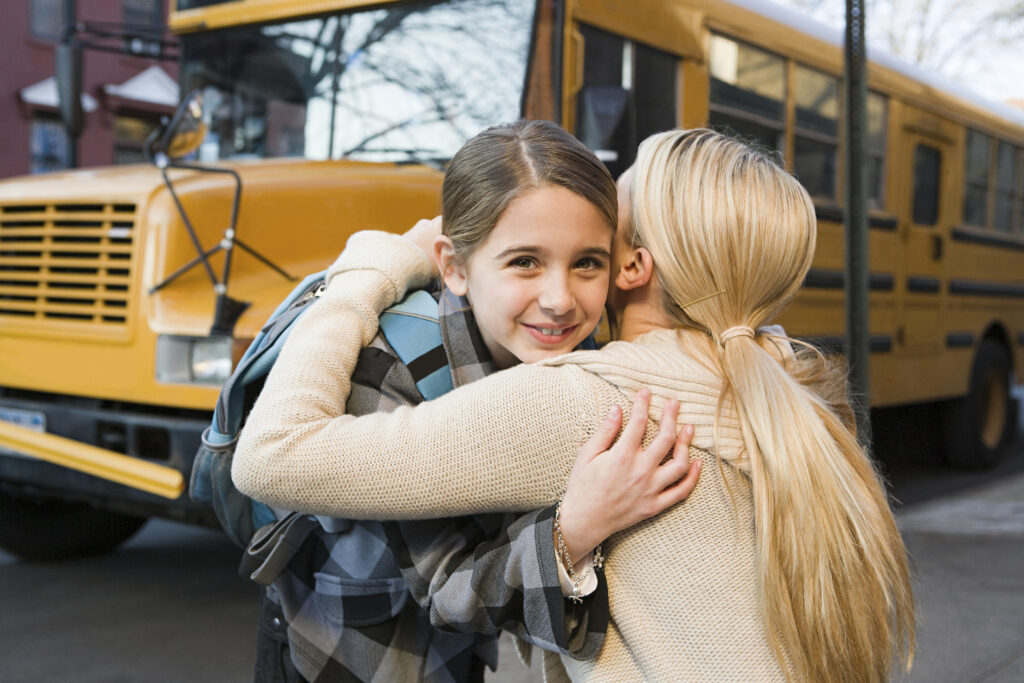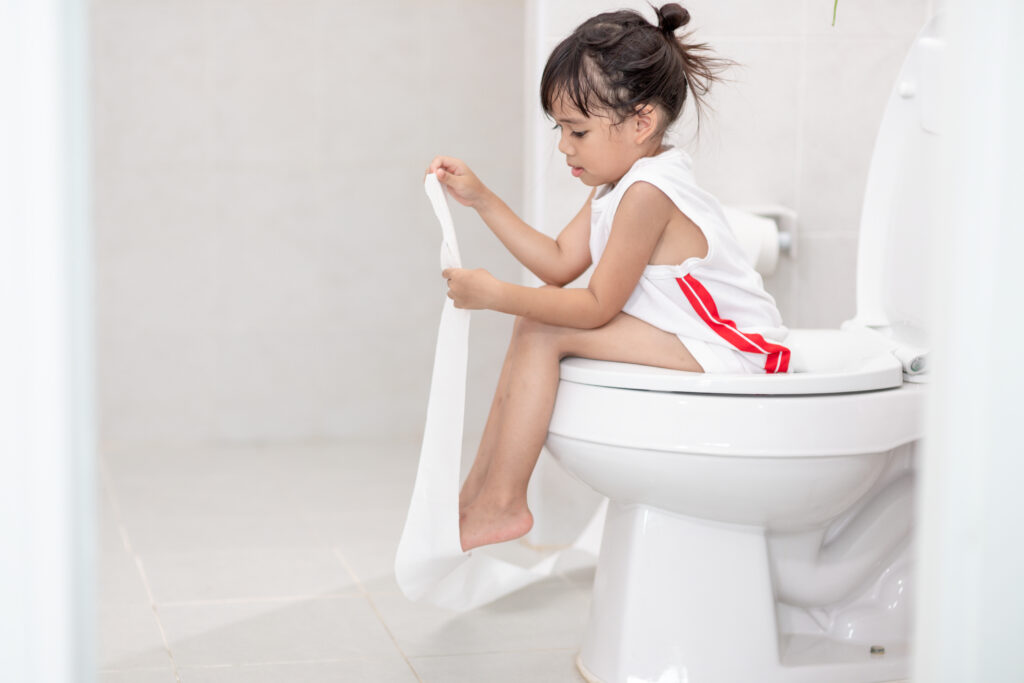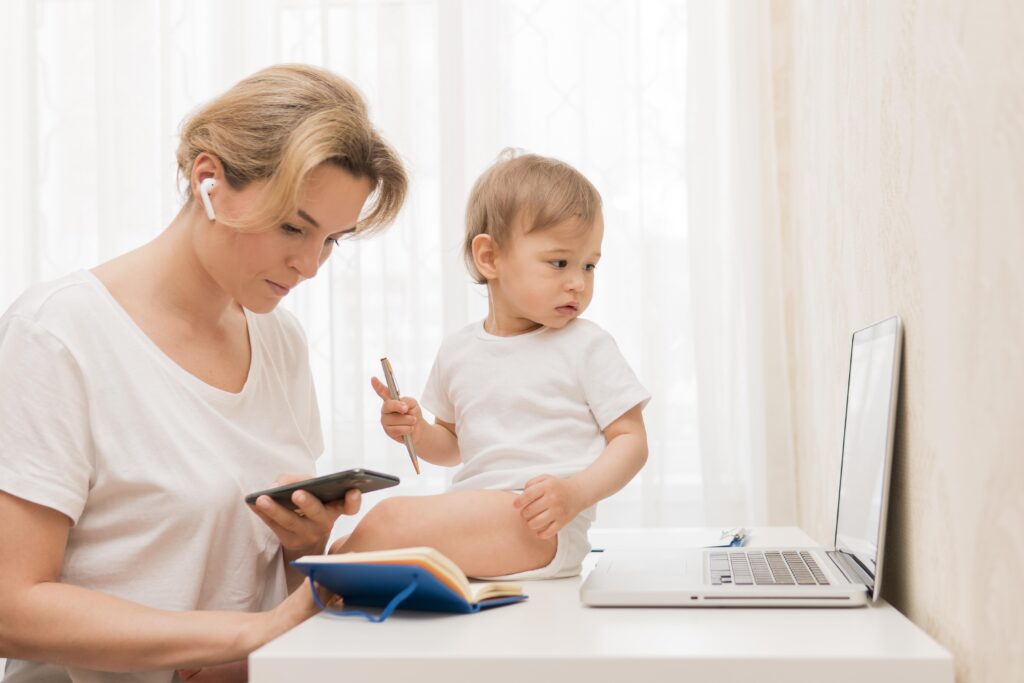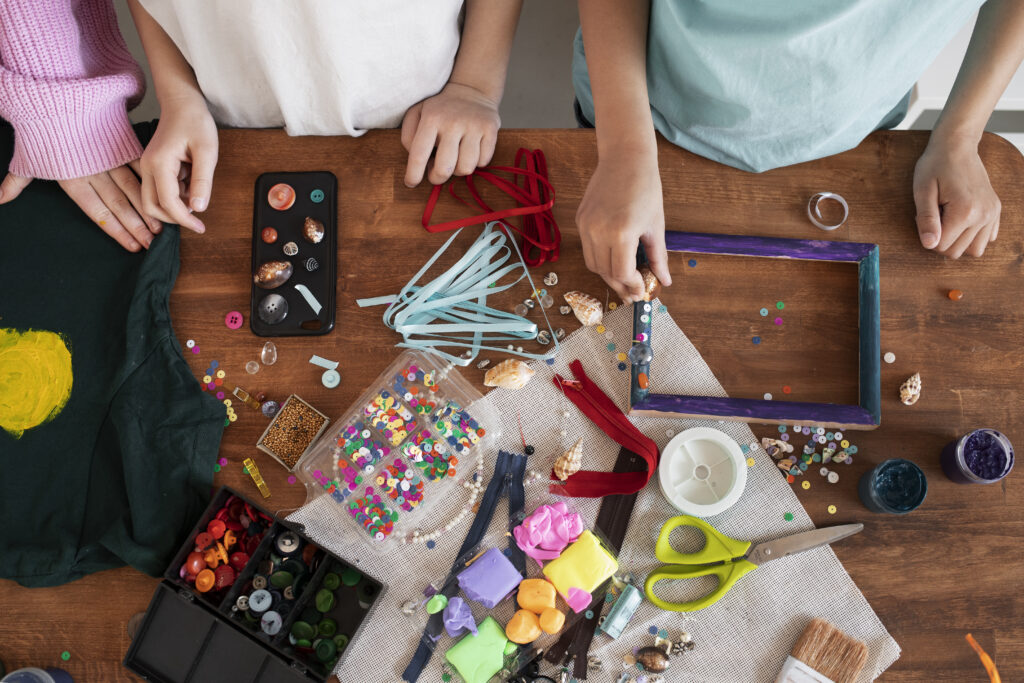The First Time at the Dentist: A Stress-Free Guide for Parents and Kids

A child’s first dental appointment is an important milestone, but it can also be an intimidating experience for both parents and children. The unfamiliar environment, new faces, and strange tools can be overwhelming. However, with the right preparation and a mindful parenting approach, you can make your child’s first dental visit to a Dentist for a smooth and positive experience. In this guide, we’ll explore how to find a great pediatric dentist, ways to prepare your child for their visit, and the pros and cons of fluoride treatments. How to Find a Good Pediatric Dentist Choosing the right dentist can make all the difference in ensuring a stress-free first visit. Here are some tips to help you find the best fit for your child: Preparing Your Child for Their First Dental Appointment Preparation is key in reducing fear and making the visit enjoyable. Here are some ways to help your child feel ready: 1. Talk About the Visit in a Positive Way Introduce the idea of going to the dentist in an exciting manner. Use books from the best parenting books list that explain dental visits in a fun and engaging way. 2. Role-Play at Home Set up a pretend dentist’s office at home where your child can take turns being the dentist and the patient. This makes the experience feel familiar before they even step into the real office. 3. Schedule a Family Meeting Hold a family meeting to discuss the importance of dental health and answer any questions your child might have. This gives them a sense of involvement and eases their concerns. 4. Use Nonviolent Communication Practice nonviolent communication by validating their feelings: “I understand you might feel nervous, but the dentist is there to help keep your teeth healthy and strong.” 5. Choose the Right Appointment Time Schedule the visit at a time when your child is well-rested and in a good mood, such as in the morning or after a nap. Pros and Cons of Fluoride Treatments Fluoride is commonly recommended to strengthen tooth enamel and prevent cavities, but some parents may have concerns. Let’s break down the benefits and drawbacks: Pros: Cons: If you’re unsure whether fluoride treatments are right for your child, discuss options with your dentist and explore natural methods for maintaining strong teeth. Final Thoughts: Setting the Stage for a Lifetime of Healthy Smiles A child’s first dental visit doesn’t have to be a stressful event. By choosing the right dentist, preparing in advance, and using positive discipline strategies for toddlers, you can help them feel comfortable and confident in the dental chair. Tip: Try brushing your teeth together as a fun activity! Kids love mimicking their parents, and this simple habit reinforces the importance of oral hygiene. For more parenting insights, don’t forget to follow us on Instagram and YouTube for expert guidance and practical tips. For the latest news and updates, click here to view our recent press releases and stay informed about the newest parenting trends and research. Let’s make dental visits a positive experience—one smile at a time!
Affection: Building Connection and Supporting Brain Development

Affection is one of the most powerful tools in parenting. It fosters connection, builds trust, and nurtures a child’s emotional and cognitive growth. Beyond the warmth it brings, physical contact plays a crucial role in brain development, laying the foundation for healthy relationships and emotional resilience. Let’s explore why appropriate physical contact is essential, how to teach family members about affection, and ways to help children understand appropriate physical boundaries. Why the Brain Needs Physical Contact Physical affection, such as hugs, cuddles, and gentle touches, stimulates the release of oxytocin—often called the “love hormone.” This hormone reduces stress, fosters bonding, and promotes a sense of security. For children, this connection is essential for brain development, particularly in areas responsible for emotional regulation, memory, and social skills. According to child development specialists, consistent physical affection during early childhood helps children develop secure attachments, which are the foundation for healthy relationships throughout life. It also supports family well-being, creating an environment where children feel safe, loved, and valued. For younger children, incorporating affection into activities for toddlers—like holding hands during walks or sitting close while reading—reinforces these benefits naturally. Teaching Family Members About Affection Ensuring a loving and affectionate environment requires cooperation and understanding among all family members. Here are steps to encourage appropriate and meaningful displays of affection within your family: 1. Lead by Example Children often emulate the behavior they see. By practicing open and warm affection with your partner or other family members, you’re setting a powerful example. 2. Hold a Family Meeting Use a family meeting to discuss the importance of affection in strengthening bonds. This is a great opportunity to talk about different ways family members can show love, from hugs and high-fives to verbal affirmations. 3. Celebrate Cultural Differences Every family has unique ways of expressing affection, shaped by cultural or personal values. Celebrate and respect these differences while finding a shared approach that works for everyone. 4. Encourage Verbal Affection Not everyone is comfortable with physical contact, and that’s okay. Teach family members to use words to express love, such as saying, “I’m proud of you” or “I love you.” Teaching Kids Appropriate Physical Guidelines As important as affection is, teaching children about appropriate physical boundaries is equally crucial. It ensures their safety, helps them respect others, and empowers them to advocate for themselves. 1. Teach Consent Early Help your child understand that their body belongs to them and that they have the right to say no to physical contact. Similarly, teach them to respect others’ boundaries. 2. Use Role-Playing Incorporate mindful parenting by using role-playing to teach scenarios where boundaries might come into play, such as greeting someone new or comforting a friend. 3. Explain Different Kinds of Touch Discuss the difference between safe, loving touch (hugs from family) and inappropriate touch. Make it clear they can always come to you if something doesn’t feel right. 4. Provide Age-Appropriate Language For younger kids, use simple phrases like “Hugs are for family and friends who say it’s okay.” As they grow, expand the conversation to include nuanced topics about personal space and relationships. 5. Reinforce with Activities Activities like drawing personal boundaries or creating a “circle of trust” chart can make abstract concepts more tangible for children. Building a Foundation for Life Physical affection, when balanced with boundaries, fosters parent-child bonding and equips children with the emotional tools they need for a fulfilling life. Families practicing conscious co-parenting can work together to create a unified approach, ensuring consistency in messages about love and respect. For additional tips and resources, explore child development classes online or consult the best parenting resources available. Stay updated by visiting our press releases here, and follow us on Instagram and YouTube for expert advice and practical ideas that empower your parenting journey. Final Thoughts: A Loving Touch Affection is one of the simplest yet most profound ways to show love and support for your child. From cuddles on the couch to a pat on the back for a job well done, these moments create a lifetime of trust, security, and confidence. By practicing affection mindfully and teaching appropriate boundaries, you’re giving your child the tools to build healthy relationships and navigate the world with confidence. So hug often, express love freely, and let your family be a place where affection flows naturally, fostering joy and connection for generations to come.
School Choice: Finding the Best Fit for Your Child

Choosing the right educational path for your child is one of the most significant decisions you’ll make as a parent. Whether you’re considering homeschooling, public school, or private school, each option comes with its own benefits and challenges. The key is finding the choice that aligns with your child’s needs, your family’s values, and your long-term goals. Here’s a guide to help you make an informed decision, with considerations for each school type and practical tips for navigating this important choice. Homeschooling: A Personalized Learning Experience Homeschooling offers a tailored approach to education, allowing parents to design a curriculum that suits their child’s unique learning style and pace. This option is particularly appealing for families who want to prioritize mindful parenting, as it provides opportunities to integrate activities for toddlers and older children into daily learning. Pros: Cons: If homeschooling appeals to you, consider consulting a child development specialist to ensure your curriculum supports your child’s developmental milestones. Public School: A Structured and Social Environment Public schools are a popular choice for many families due to accessibility and the opportunity for children to interact with peers in a structured environment. Schools often have established resources, extracurricular activities, and trained educators who support various learning needs. Pros: Cons: Parents practicing conscious parenting can stay involved by attending school events, communicating with teachers, and creating a supportive home environment for learning. Private School: Specialized and Value-Aligned Education Private schools offer smaller class sizes, specialized programs, and often align with specific educational philosophies or religious values. They can be an excellent choice for families seeking a focused approach to their child’s education. Pros: Cons: Before committing, visit the school, meet the teachers, and attend open houses to ensure the environment aligns with your family’s expectations and your child’s personality. Factors to Consider When Choosing a School When evaluating school options, it’s essential to consider both your child’s needs and your family’s circumstances. Here are a few factors to keep in mind: Consider holding a family meeting to discuss these factors together, allowing older children to share their thoughts. This collaborative approach fosters family well-being and ensures everyone feels involved in the decision. Supporting Your Choice with Resources Whichever path you choose, supplementing your child’s education with child development classes online or exploring the best parenting resources can help fill any gaps and enhance their learning experience. These tools provide parents with valuable insights and strategies for supporting their child’s growth. For updates on educational trends and insights, check out our press releases here to stay informed about the latest in child development and schooling options. Final Thoughts: Choosing with Confidence Choosing a school is a deeply personal decision, and there’s no one-size-fits-all answer. By understanding your child’s needs, exploring your options, and staying involved in their education, you can create a supportive and enriching environment for their development. For more tips and guidance on parenting and education, follow us on Instagram and YouTube. We share valuable insights, resources, and tools to empower your parenting journey and help you make confident decisions for your child’s future. Remember, the ultimate goal is to provide an environment where your child feels supported, challenged, and inspired to grow. Trust your instincts, stay flexible, and know that your thoughtful choice will set the foundation for your child’s success and happiness.
Safe Halloween: Protecting Your Children While Keeping the Fun

Halloween is an exciting time for children and families. Costumes, candy, and community celebrations make it a holiday to remember. However, with strangers, alcohol at parties, and distracted parents in the mix, ensuring your child’s safety becomes a top priority. By planning ahead and practicing mindful parenting, you can create a memorable and safe Halloween for everyone. Planning for a Safe Halloween Preparation is key to a safe and enjoyable Halloween. Here are steps to take before heading out for trick-or-treating or attending any celebrations: 1. Choose Safe Costumes Costumes should be fun but also practical. Here’s what to keep in mind: 2. Map Out Your Route If you’re trick-or-treating, plan your route in advance. Stick to well-lit areas and neighborhoods you’re familiar with. This minimizes the risk of encountering unsafe environments. 3. Discuss Safety Rules Before heading out, hold a family meeting to go over basic safety rules. Topics to cover: Tips for Safe Trick-or-Treating 1. Go as a Group There’s safety in numbers. Whether you’re walking as a family or with friends, traveling in a group reduces risks and ensures kids are less likely to wander off. 2. Stay Visible Equip your child with a flashlight or glow-in-the-dark accessories. These not only make them easier to spot but also add a fun element to their costume. 3. Check Candy Carefully Before allowing your child to dig into their candy haul, inspect it for tampering. Discard anything that looks opened, unusual, or homemade (unless from someone you trust). Attending Halloween Parties Halloween parties can be fun for older children and families, but they also come with potential hazards, such as alcohol and crowded spaces. Here’s how to keep it safe: 1. Supervise Younger Kids Keep an eye on young children, especially if the party has open alcohol or other distractions. Conscious parenting helps you stay present and aware of your child’s surroundings. 2. Monitor Food and Drinks Make sure your child sticks to food and drinks you’ve approved. It’s easy for little ones to grab something inappropriate in the excitement of a party. 3. Encourage Respectful Behavior Parties often include interactions with unfamiliar people. Teach your child to be polite but cautious, reinforcing boundaries and personal space. Safe Fun at Home If trick-or-treating or parties aren’t your style, consider hosting a Halloween celebration at home. This option allows for creative, safe fun. Ideas for a Home Halloween Party: These activities foster family well-being while keeping the excitement of Halloween alive. Additional Safety Tips for Parents Resources for Parenting Support For more insights on safety, parenting, and child development, check out the best parenting resources available on our website. You can also find helpful advice through child development classes online or by consulting a child development specialist. Stay updated on the latest trends and safety tips by visiting our press releases here, and follow us on Instagram and YouTube for ongoing tips that will empower your parenting journey. Final Thoughts: A Halloween to Remember Halloween is a magical time for kids, filled with fun and adventure. By taking proactive steps to ensure their safety, you can focus on creating memories that last a lifetime. Whether it’s planning your route, choosing the perfect costume, or holding a family meeting to go over safety rules, each effort contributes to a joyful and secure experience. This Halloween, embrace the excitement, practice safety, and enjoy the holiday with your little ones. After all, the most important treat is the peace of mind that comes from knowing your family is safe and happy. Have a spooky, safe, and spectacular Halloween! 🎃
Potty Training: Navigating the Journey with Patience and Positivity

Potty training is a milestone every parent looks forward to, but it’s also one that comes with its share of challenges. It’s easy to worry about timelines or feel frustrated when progress is slow, but here’s the good news: your child won’t go to college in a pull-up. Each child has their unique timeline, and with the right approach, you can make this process a positive experience for the entire family. Let’s explore popular potty training methods, how to stay patient, and how to make the journey as smooth as possible. Why Potty Training Matters Beyond the practical benefits of ditching diapers, potty training plays a significant role in a child’s development. It’s an opportunity to teach independence, responsibility, and self-awareness. For parents, it’s also a moment to practice mindful parenting, where you stay present and attuned to your child’s needs and emotions. Potty training can also enhance parent-child bonding as you work together toward a shared goal. With patience and a bit of creativity, this process can become an empowering experience for your child. The 3-Day Potty Training Method: A Quick Transition The 3-day method is a popular approach for parents looking to make a quick transition from diapers to potty. It involves dedicating three days to intensive potty training, where your child goes diaper-free and is encouraged to use the potty consistently. Benefits of the 3-Day Method: Tips for Success: The Benefits of Pull-Ups For families who prefer a gradual approach, pull-ups can be an excellent tool. They provide a middle ground between diapers and underwear, helping your child transition at their own pace. Benefits of Pull-Ups: Pull-ups can be particularly helpful during the early stages of potty training or as part of a conscious co-parenting strategy, ensuring consistency between caregivers. The Power of the Reward System Rewards can be a fun and effective way to motivate your child during potty training. The key is to make rewards immediate and achievable to reinforce positive behavior. Reward Ideas: Using rewards ties into family well-being by creating a positive atmosphere around potty training, making it a less stressful experience for both you and your child. Staying Positive Throughout the Process Potty training is a journey, not a race. Here’s how to stay positive even when it feels challenging: Additional Resources for Support Potty training doesn’t have to be overwhelming. There are plenty of resources available to guide you through the process. Explore child development classes online or check out the best parenting resources to gain tips and techniques from experts. For updates and insights, visit our press releases here, and follow us on Instagram and YouTube for ongoing tips, tools, and advice to empower your parenting journey. Final Thoughts: Trust the Process Potty training is a significant milestone, but it’s also just one of many steps in your child’s growth. By staying patient, supportive, and positive, you’re not only teaching them a skill—they’re also learning resilience, independence, and trust in your guidance. Whether you opt for the 3-day method, pull-ups, or a blend of both, remember that every child progresses at their own pace. Embrace the journey, celebrate the milestones, and know that with love and encouragement, you’re setting your child up for success—both in potty training and beyond. Happy training!
Guiding the Way: Understanding Lighthouse Parenting

Parenting is often described as one of life’s greatest journeys, and like any journey, it’s easier with a guiding light. That’s where lighthouse parenting comes in. This balanced approach emphasizes guiding children through life with care and attention, like a lighthouse providing direction to ships in the storm. It’s about being a steady, supportive presence while allowing your children to navigate their own paths. Lighthouse parenting blends the principles of conscious parenting with practical strategies for fostering independence, emotional resilience, and a sense of security. Let’s dive deeper into this approach and explore how it can transform your parenting journey. What is Lighthouse Parenting? Lighthouse parenting is a term coined by Dr. Kenneth Ginsburg, a pediatrician and child development expert. It’s based on the idea that parents should act as beacons of light—guiding their children safely through challenges while letting them explore and grow. This approach strikes a balance between being involved and giving children the space they need to learn from their experiences. Lighthouse parents provide structure, set boundaries, and instill values while encouraging independence and critical thinking. Key Principles of Lighthouse Parenting How to Practice Lighthouse Parenting 1. Set Clear Boundaries Children thrive with structure, but they also need flexibility to explore. Establish rules that are firm yet reasonable, and explain the reasons behind them. For example, holding a family meeting to discuss house rules ensures that children feel involved and understand the expectations. 2. Encourage Independence Give your child opportunities to make decisions appropriate for their age. Whether it’s letting toddlers choose their outfits or allowing older kids to plan their schedules, these experiences build self-reliance and problem-solving skills. 3. Focus on Emotional Development Lighthouse parenting emphasizes emotional intelligence. Teach your child to identify and express their emotions in healthy ways. This approach aligns with practices taught in child development classes online and supported by child development specialists. 4. Balance Support and Freedom Be there when your child needs you, but resist the urge to solve every problem for them. Offering guidance while allowing them to face challenges on their own builds resilience and adaptability. The Benefits of Lighthouse Parenting Tips for Starting Your Lighthouse Parenting Journey Stay Informed and Empowered For more tips on parenting styles and strategies, check out our press releases here and follow us on Instagram and YouTube. We offer expert advice and real-life examples to empower your parenting journey. Final Thoughts: Lighting the Path for Your Child Lighthouse parenting is about finding the balance between providing guidance and allowing independence. By being a steady, supportive presence, you’re equipping your child with the tools they need to navigate life’s waters confidently. Embrace the journey, trust in your parenting instincts, and remember that your love and guidance are the most important beacons in your child’s life. Together, you’ll create a foundation of trust, resilience, and connection that will carry them through life’s challenges and triumphs.
Baby Signing: A Bridge to Early Communication and Connection

Baby signing is a powerful tool that can help toddlers express their needs before they’re able to speak. Imagine being able to understand what your child wants without tears or tantrums! Signing helps bridge the communication gap, making the early years smoother for both parents and children. Teaching simple signs can foster stronger connections, reduce frustration, and lay the groundwork for language development. Why Baby Signing Matters Babies are naturally eager to communicate, but their vocal cords and language skills aren’t fully developed in the first year or two of life. This often leads to frustration on both ends, as babies have needs and desires they can’t yet verbalize. Signing gives them a way to communicate before words fully emerge. Using signs in a child’s early life aligns with conscious parenting principles, encouraging us to be attentive to our child’s cues and respond to their needs in a supportive manner. When babies can communicate through signs, it enhances parent-child bonding and builds trust. Studies have shown that babies who learn basic signs tend to develop language skills more confidently, and early communication can lead to fewer tantrums and a calmer family environment. Getting Started with Baby Signing Starting with baby signs doesn’t have to be overwhelming. Simple, consistent gestures are often all it takes. Ideally, begin with a few basic signs that correspond to everyday needs or activities. Babies usually start signing back between 6-12 months, and using these signs regularly helps them understand and remember. Mindful parenting can help you integrate signing naturally. Engage your child by making eye contact, repeating the sign, and saying the word aloud. This approach reinforces the concept without overwhelming your baby. Top 5 Signs to Teach Your Baby Here are five basic signs to help your baby communicate their needs: Tips for Success with Baby Signing The Bigger Picture: Communication and Family Connection Baby signing not only empowers your child but also strengthens family communication. When your baby can express their needs, it reduces frustration for both of you and enhances family well-being. By creating a communication-rich environment, you’re building a strong foundation for language and connection that supports both short-term understanding and long-term emotional development. For more resources and tips on effective communication with your child, follow us on Instagram and YouTube. We share expert insights and practical advice that empower your parenting journey and provide tools for fostering a healthy family environment. Final Thoughts: Building Bonds Through Communication Teaching your baby to sign is a beautiful way to connect and communicate before words are fully formed. It’s an investment in your relationship, showing your child that you understand their needs and are committed to their growth. Every sign, every gesture, and every shared moment adds to a foundation of love and trust. So embrace this journey, have fun with the signs, and enjoy the milestones as your little one learns to express themselves. These moments are precious, and each sign brings you one step closer to a world of understanding and joy with your child.
Mental Health in Children: Recognizing Signs and Supporting Well-being

The mental health of children is an increasingly pressing issue. Paediatricians and mental health professionals are raising alarms as children face unprecedented challenges, including the lingering effects of the pandemic and growing societal pressures. As parents, it’s crucial to be vigilant in recognizing early signs of distress, as these can pave the way for early intervention and support. Let’s explore the initial signs of mental health struggles in children and how we, as parents, can guide them through these challenges with compassion and mindful parenting. Recognizing the Signs of Distress Children often express mental distress differently than adults, so it’s essential to understand their behaviors and emotions from a developmental perspective. Here are some initial signs that may indicate your child is struggling: What to Do When You Notice Signs of Distress If you observe any of these behaviors, it’s essential to approach the situation with patience and empathy. Conscious parenting encourages us to be fully present with our children, acknowledging their emotions without judgment. Finding Supportive Resources It’s also helpful to seek out resources that align with your child’s needs. From child development classes online to community-based programs, there are numerous avenues for gaining insight into your child’s mental health journey. Access to best parenting resources can empower you as a parent to support your child effectively and understand their unique needs. Fostering Mental Health through Community No parent should have to navigate these challenges alone. Following parenting-focused communities on social media, such as our Instagram and YouTube channels, can provide valuable tips, expert interviews, and support from other parents who may be facing similar situations. Sharing stories, resources, and insights can create a sense of community that strengthens our parenting journey. Final Thoughts: Your Role in Supporting Your Child’s Mental Health Supporting your child’s mental health is an ongoing journey that requires compassion, patience, and a commitment to understanding. Remember, noticing signs of distress is not a reflection of failure but an opportunity to strengthen your bond and guide them through life’s challenges.If you’re ever unsure, remember that reaching out for help is a powerful step toward supporting your child. Together, through mindful parenting and open communication, we can create a safe, nurturing environment where children feel seen, heard, and loved. Let’s walk this path with courage, knowing that each moment of connection helps build resilience and a brighter, healthier future for our children.
Crafts with Kids: Fun, Connection, and Learning Without the Mess

Crafting with kids is more than just a fun activity—it’s a wonderful way to foster creativity, boost development, and spend meaningful time together. Craft activities encourage children to explore their imagination, develop fine motor skills, and learn patience. As a parent, you may worry about the potential mess or how much effort it takes to get everything organized, but there are plenty of low-key crafts that keep your home intact and still engage your child. Why Crafts Are Beneficial for Kids Crafting offers a range of developmental benefits for children. Engaging in crafts can improve fine motor skills, as children cut, glue, or color. It encourages problem-solving as they figure out how to construct something or think creatively. Crafts also provide an opportunity for parent-child bonding; by working together, you’re sharing experiences, communicating, and building memories that last. Moreover, crafts foster a sense of achievement. When kids complete a project, they feel proud of their work, boosting their self-esteem and encouraging them to try new things. This is where mindful parenting comes in; being present and actively participating in your child’s crafting experience allows you to see the world through their eyes and reinforces the connection between you. Low-Key Craft Ideas to Minimize the Mess Here are a few easy, low-key craft ideas that engage children without causing chaos in your home: Tips for Mess-Free Crafting To make sure crafting remains a stress-free experience, here are a few tips: Bonding and Learning Through Crafts Crafting together can also serve as a great tool for conversation. Holding a family meeting to discuss upcoming craft ideas or letting your child choose the materials for a project can foster independence and make them feel valued. These activities also help children understand collaboration and patience. Crafting time is a perfect example of conscious co-parenting too, where both parents can get involved, share responsibilities, and enjoy the creative journey with their children. Plus, when kids see their parents involved, they’re often more excited to participate and learn. How Crafts Benefit Parents Too Crafting isn’t just beneficial for kids; it’s rewarding for parents as well. Watching your child’s creativity unfold can bring immense joy, reminding you of the importance of slowing down and enjoying simple pleasures. As a parent, crafting offers you a chance to be fully present with your child, which is at the heart of conscious parenting. Crafting can also give you insights into your child’s thought process, helping you understand their preferences and strengths. This perspective can be valuable as you explore child development resources or consider child development classes online to support your child’s learning journey. Final Thoughts: Make Crafting a Regular Bonding Activity Crafting with your child is a meaningful way to encourage creativity, support development, and strengthen your connection. It doesn’t have to be elaborate or messy to be effective. With simple, low-key projects, you can enjoy all the benefits of crafting without the stress. For more tips on activities that enhance family bonding and support your child’s growth, don’t forget to follow us on Instagram and YouTube. We share insights, tutorials, and ideas that make parenting and family life fulfilling and fun. Remember, the moments spent creating and connecting with your child are precious. Embrace them, enjoy them, and watch as your bond grows stronger with each masterpiece created together.
Vaccination: Making an Informed Decision for Your Child’s Health

Vaccinating our children is one of the most important choices we make as parents, impacting not only their health but also the well-being of our communities. However, deciding on vaccination schedules can feel overwhelming, especially with the abundance of information and differing opinions. Here, we’ll explore how to make an informed choice about vaccinations, focusing on their safety, efficacy, and the benefits for children. Why Vaccines Are Important Vaccines protect children from serious illnesses that once had devastating effects. Diseases like measles, mumps, and whooping cough were once common and often fatal, but thanks to widespread vaccination, they are now rare. Vaccinations work by teaching the immune system to recognize and combat specific germs, creating immunity without causing the illness itself. For parents practicing conscious parenting, vaccinations align with the goal of nurturing a child’s health in the most effective way possible. Vaccinating is an act of love and responsibility, ensuring that our children are protected while also safeguarding the health of others. Understanding Vaccine Safety and Efficacy One of the primary concerns for parents is the safety of vaccines. Vaccines undergo rigorous testing and must pass strict safety standards before being approved for use. Numerous studies have shown that vaccines are both safe and effective in preventing disease. While some children may experience mild side effects, like redness at the injection site or a slight fever, serious reactions are extremely rare. The benefits of vaccination far outweigh the risks. Vaccines are about prevention, reducing the chance of severe complications from diseases that can impact family well-being and lead to long-term health issues. Making Informed Decisions About Shot Schedules Vaccination schedules can vary depending on where you live, but they are typically designed to provide immunity at the ages when children are most vulnerable. Your child’s pediatrician is an excellent resource for understanding the recommended schedule and any adjustments based on individual health factors. If you’re feeling unsure, consider holding a family meeting to discuss the vaccination plan. Involving family members in the discussion helps ensure everyone understands the reasons behind each vaccine, building a supportive environment around your decision. Talking to Your Child About Vaccination Preparing children for vaccinations can make the experience less stressful for everyone. Using mindful parenting techniques, parents can help their children feel more comfortable and secure during vaccinations. Explain what to expect in simple terms: “The doctor will give you a little shot to help keep you healthy. It might pinch, but it’ll be over very quickly.” For younger children, you might engage them in activities for toddlers that encourage a positive mindset before visiting the doctor. Simple games like “doctor role play” can be fun and help them understand that doctors are there to help. Supporting a Healthy Vaccination Experience Here are a few practical tips to make vaccination day easier for both you and your child: Building Trust and Open Communication Parents can also seek the advice of a child development specialist if they have concerns about vaccine impacts on their child’s growth or well-being. Specialists can offer personalized guidance, addressing any unique health needs your child may have. If you’re co-parenting, discussing your vaccination plan openly and respectfully can ensure a united approach that supports your child’s health. Conscious co-parenting practices encourage open communication, where both parents have a voice in health decisions, fostering a sense of partnership and shared responsibility. Finding Supportive Resources Navigating vaccination decisions can be easier with reliable resources. Our website provides access to the best parenting resources, designed to support you in making informed choices. And don’t forget to follow us on Instagram and YouTube for tips, insights, and expert interviews that can empower your parenting journey with up-to-date information on topics like vaccination and child development. Final Thoughts: A Decision Rooted in Love and Care Vaccination is a personal yet impactful decision rooted in love and care for your child’s well-being. By prioritizing informed choices, you’re not only protecting your child from serious illness but also contributing to a healthier community. Taking proactive steps in your child’s health journey, like following recommended vaccination schedules, is a meaningful way to nurture their growth and resilience. Remember, each vaccination is a step toward a stronger, healthier future for your child. Embrace this journey with confidence, knowing that your thoughtful choices are setting them up for a life of well-being, safety, and happiness.

